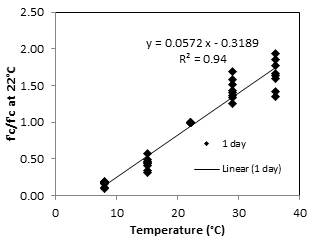Effect of temperature on early-age properties of self-consolidating concrete equivalent mortar
DOI:
https://doi.org/10.21809/rilemtechlett.2020.105Abstract
In this study, the effect of material temperature during casting on fresh properties, hydration kinetics, and early-age compressive strength of self-consolidating concrete (SCC) was evaluated. Concrete equivalent mortars (CEMs) based on SCC mixture designs with water-to-binder ratios of 0.41 and 0.45 were investigated. The SCC mixtures are targeted for infrastructure and building construction and precast applications. The CEMs were prepared at temperatures ranging from 8 to 36°C. Superplasticizer (SP) and air-entraining agent (AEA) demand were evaluated for the CEM mixtures made with different supplementary cementing material (SCM) and limestone filler types. Test results showed that the ambient temperature can significantly affect the SP and AEA demand, hydration kinetics, and compressive strength after 1 d of age. According to the ultraviolet–visible spectrophotometry (UV/Vis) test, the absorption rate of polycarboxylate-based SP decreased with temperature. In contrast, the sensitivity of polynaphthalene sulfonate-based SP to temperature was minimal. Relationships between the variations of different admixture contents, heat flux, and compressive strength with temperature were developed. For a constant slump flow and air content, the demand of the SP and AEA, heat flux, and 1-d compressive strength of CEMs increased linearly with material temperature.

Downloads
Published
How to Cite
Issue
Section
License
Authors retain copyright of the articles published in RILEM Technical Letters and grant the journal the right of first publication with open access. The work is simultaneously licensed under Creative Commons Attribution 4.0 International License (CC BY 4.0) that allows others to share and adapt the work under the following terms: 1) a proper attribution is given in a form of bibliographic record with the DOI link directing to RILEM Technical Letters; 2) a link to the license is provided; 3) the changes (if any) are indicated.









